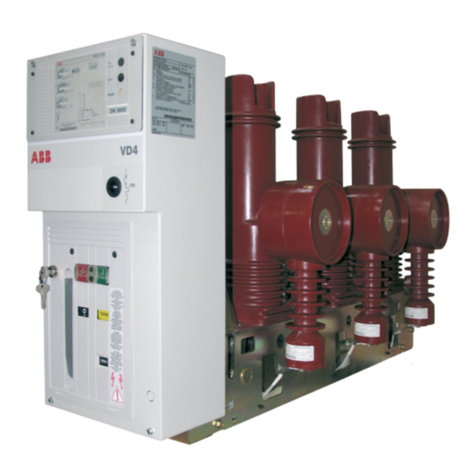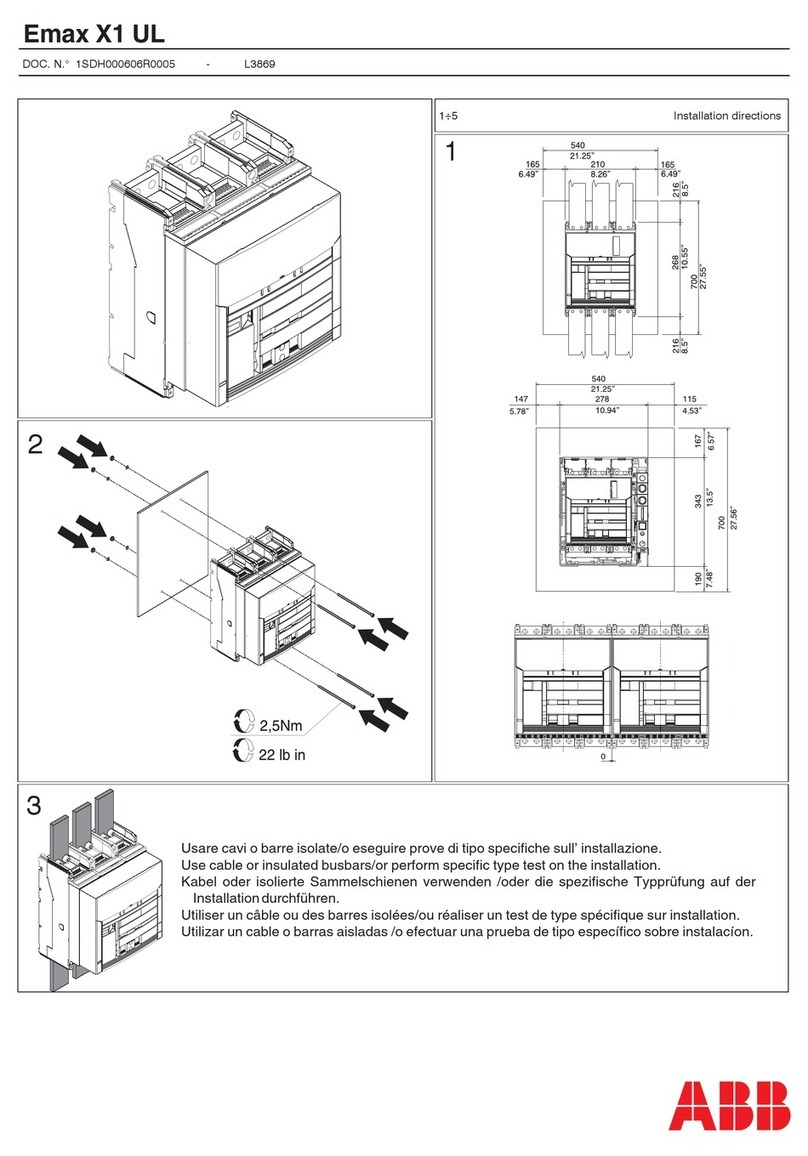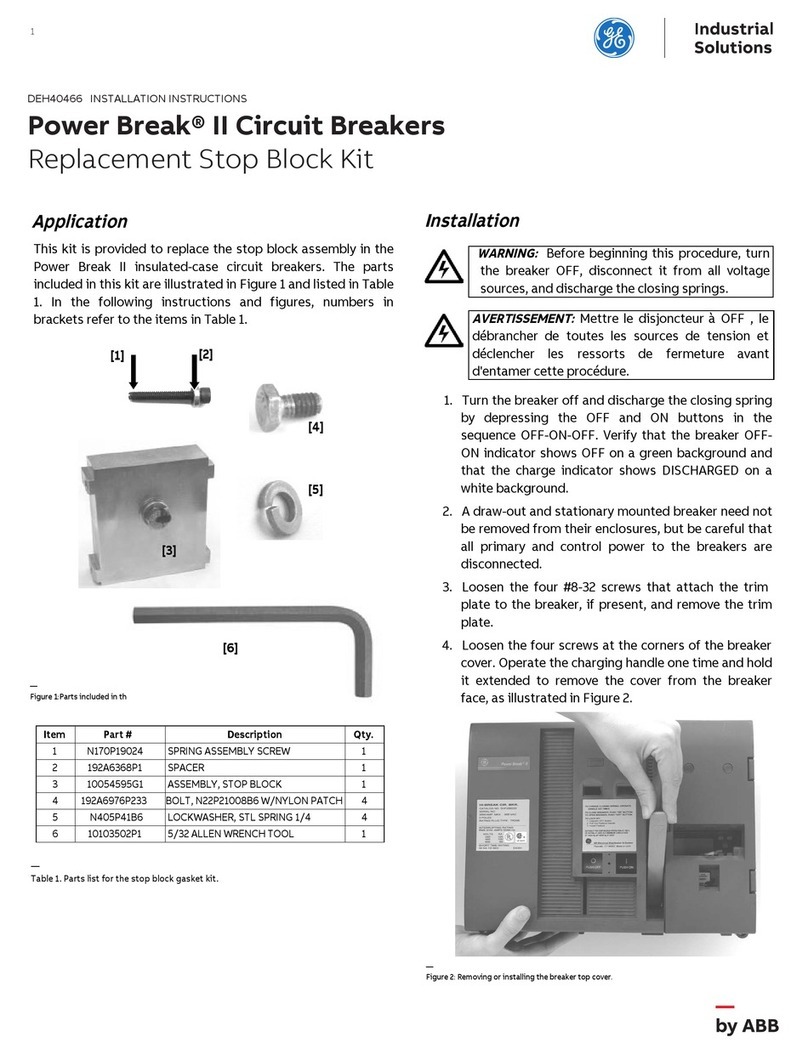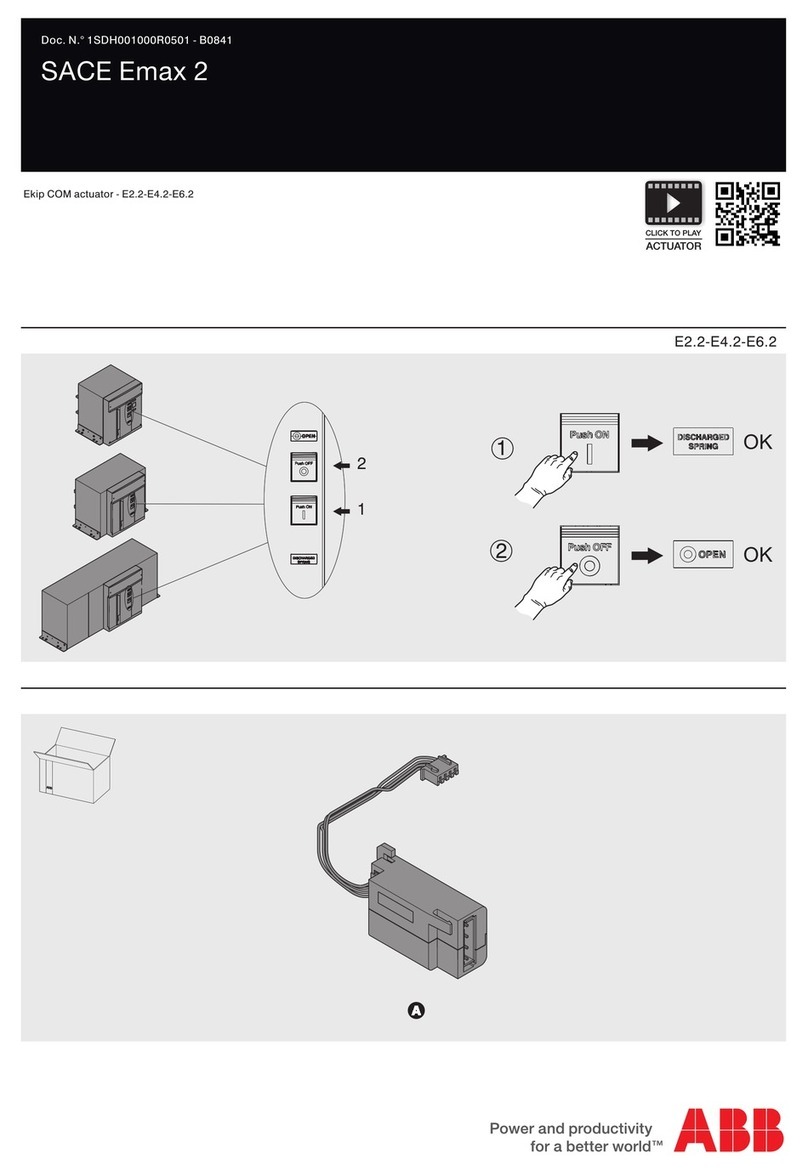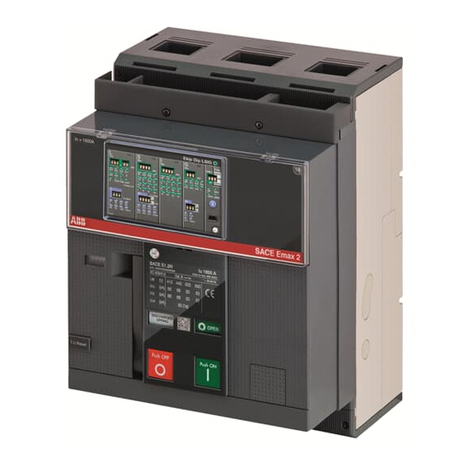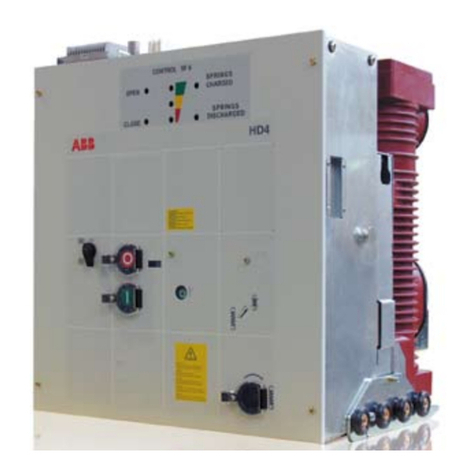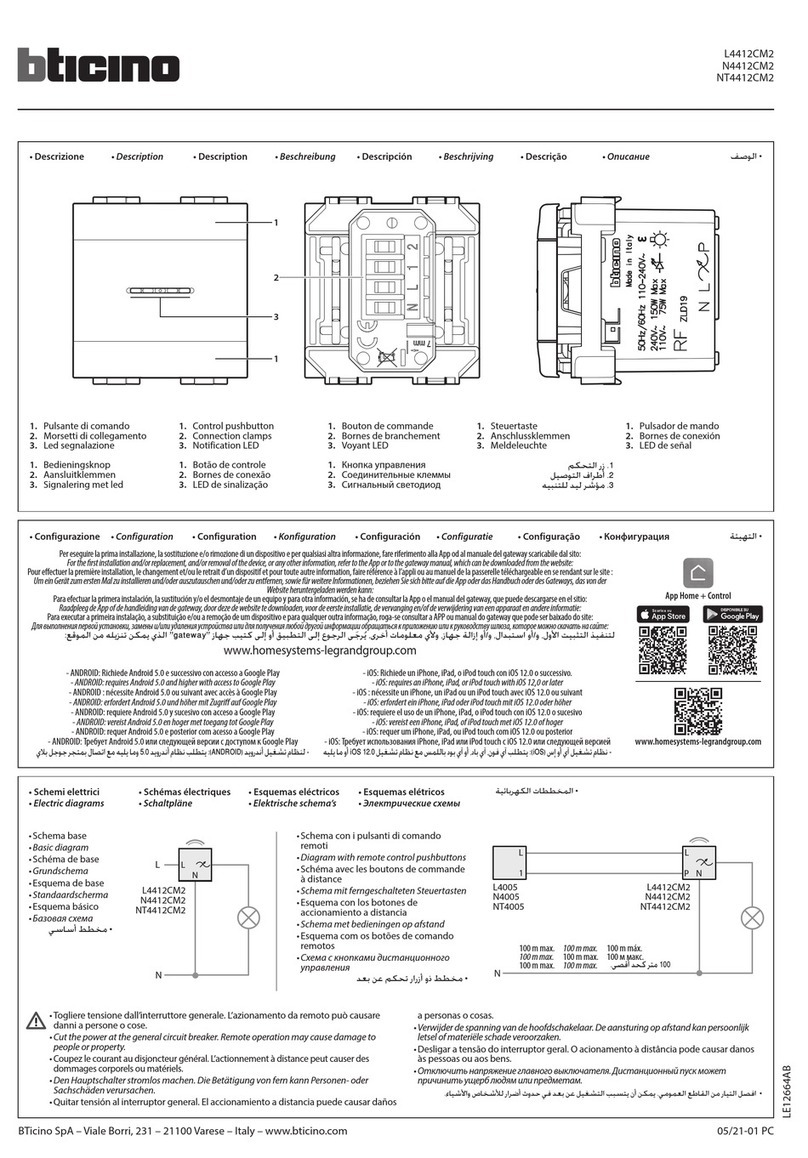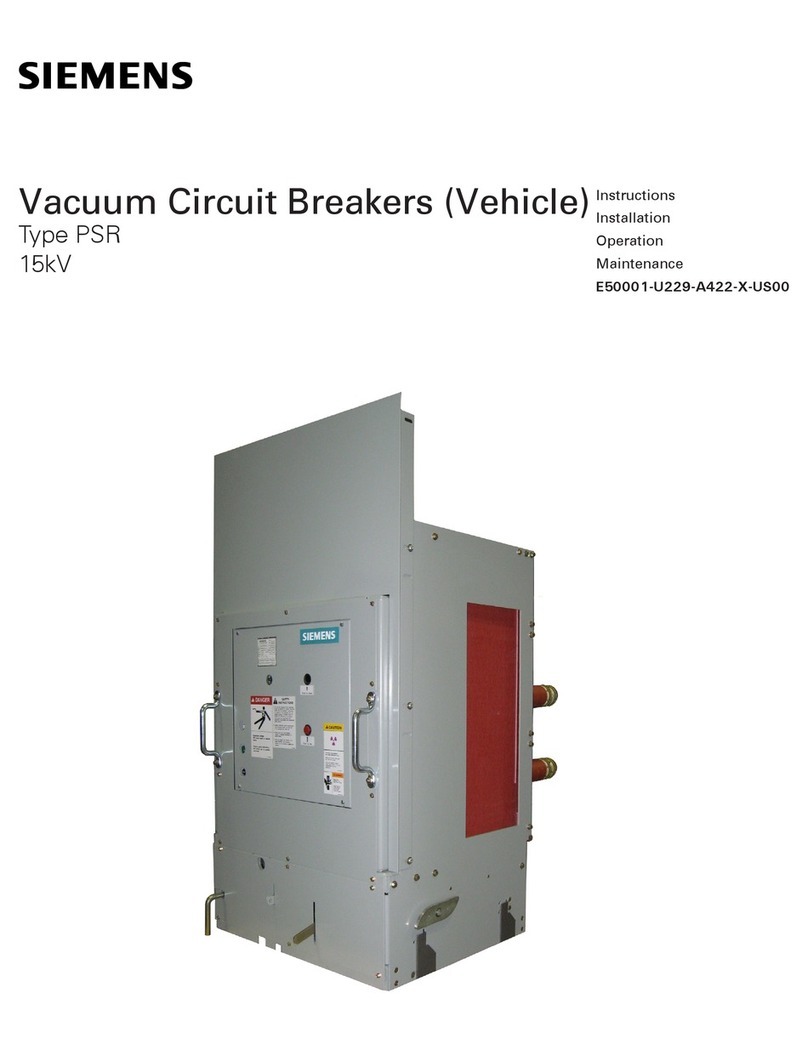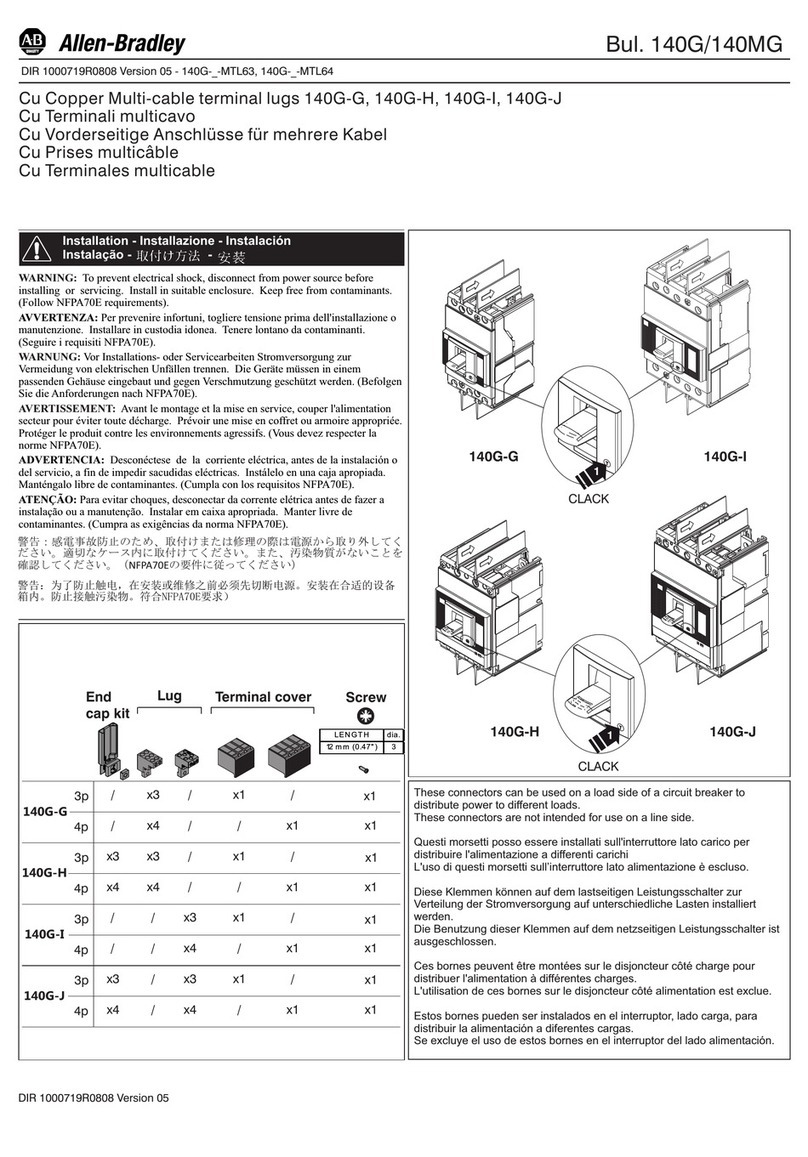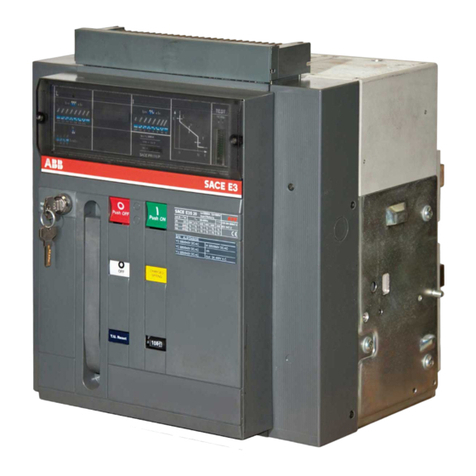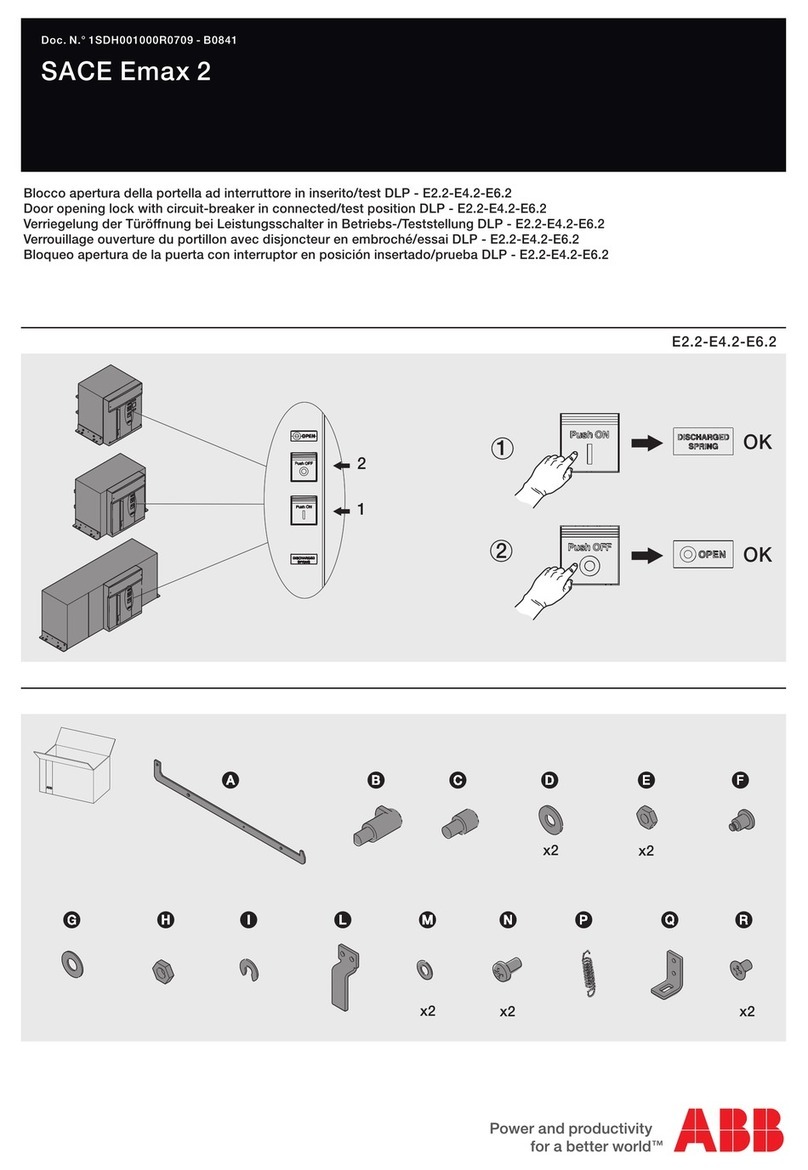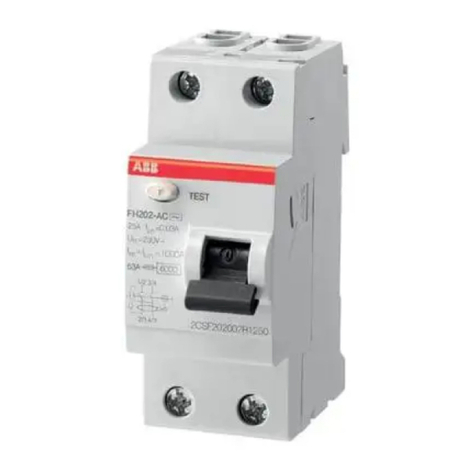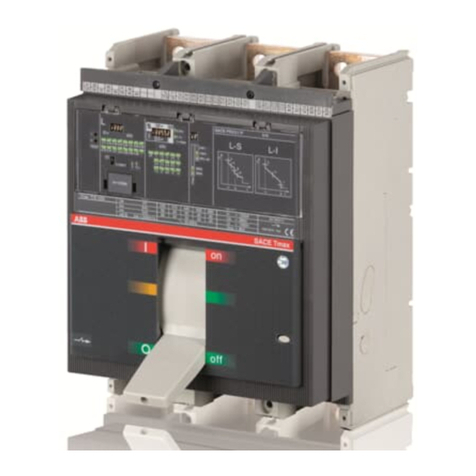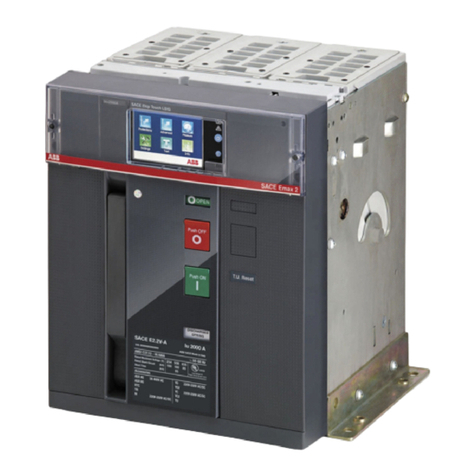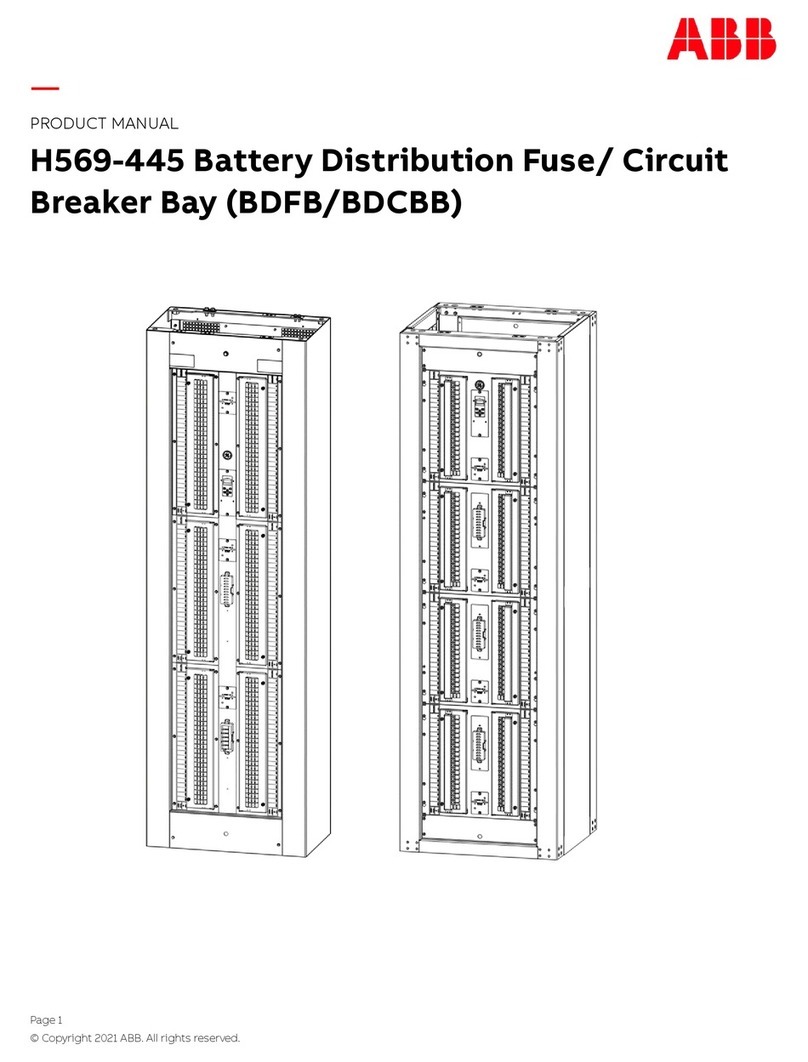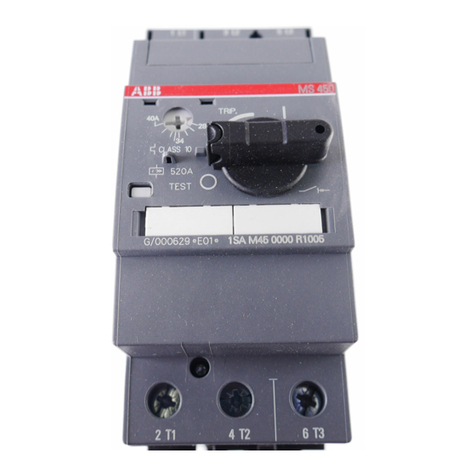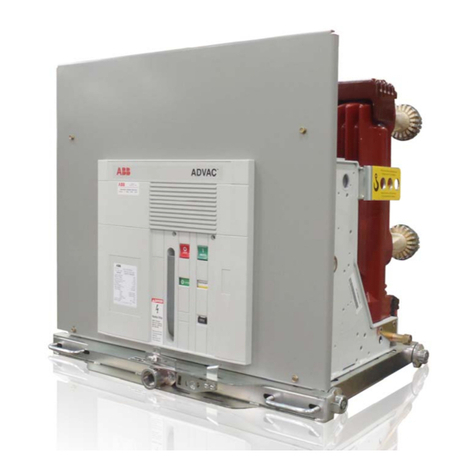
MEDIUM VOLTAGE PRODUCTS 99
—
5. Description
5.2. Service conditions
5.2.1. Normal service conditions
Follow the recommendations in the IEC 60694 and
62271-100 Standards. In more detail:
Ambient temperature
Maximum
apparatus for indoor installatio
Humidity
The average value of the relative humidity, measured for a
The average value of the pressure of the water vapour without
The average value of the relative humidity, measured for a
The average value of the pressure of the water vapour,
Altitude
5.2.2. Special service conditions
Possible within the limits permitted by reduction of the
dielectric resistance of the air.
Increase in the ambient temperature
Reduction in the rated current.
Encourage heat dissipation with appropriate additional
ventilation.
Climate
To avoid the risk of corrosion or other damage in areas:
with a high level of humidity, and/or
with rapid and large temperature variations, take
appropriate steps (for example, by using suitable electric
heaters) to prevent condensation phenomena.
For special installation requirements or other
operating conditions, please contact ABB.
The VM1 type vacuum circuit breakers are
designed for indoor installation in air-insulated
switchgear.
In respect of the technical characteristics, VM1
circuit breakers are suitable for operation of
electric circuits under normal and fault service
conditions.
The vacuum circuit breakers have particular
advantages when used in systems with a high
frequency of operations and/or which lead to a
certain number of short-circuit trips. The VM1
type vacuum circuit breakers stand out for their
particularly high operating reliability, extremely
long useful life expectancy and for being
completely maintenance-free.
The VM1 type vacuum circuit breakers are
available in the fixed and withdrawable version.
The basic structure is shown in the “Technical
data” section.
5.1. Standards and regulations
5.1.1. Fabrication
The VM1 circuit breakers conform to the following
Standards:
VDE 0670, part 1000, and IEC 60694
DIN VDE 0670, part 104, and IEC 62271-100
DIN VDE 0847, part 4, and IEC 61000-4.
5.1.2. Installation and operation
For assembly and operation, please refer to the
relative regulations, and in particular to:
DIN VDE 0101, AC electrical plants with voltage
higher than 1 kV
DIN VDE 0100-410, Installation of electrical
plants up to 1000 V, protective measures
VDE 0105, Operation of electrical plants
DIN VDE 0141, Earthing systems for special
electrical plants with rated voltages higher
than 1 kV
Accident prevention regulations of insurance
institutes against accidents at the workplace or
of comparable organisations
Safety directives for auxiliary and operating
materials.

